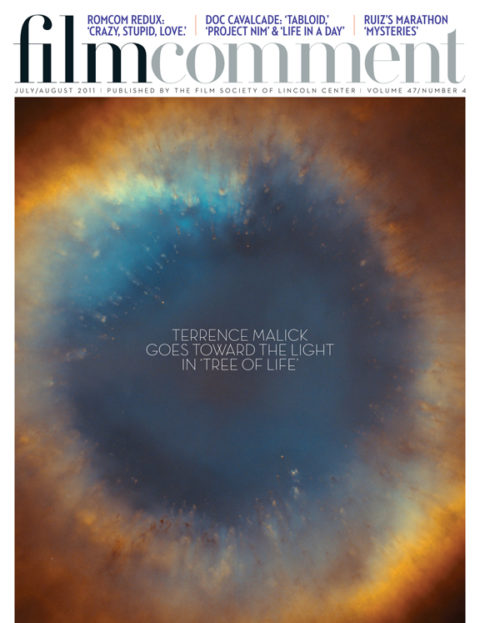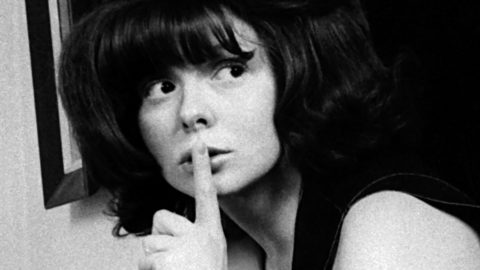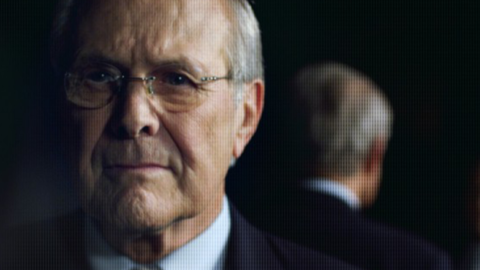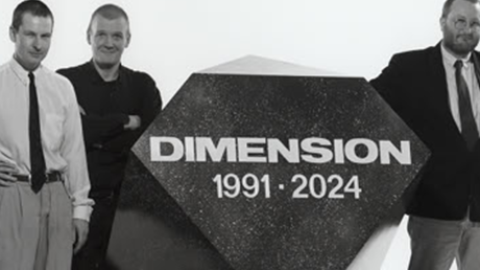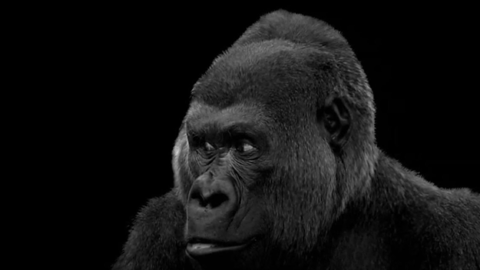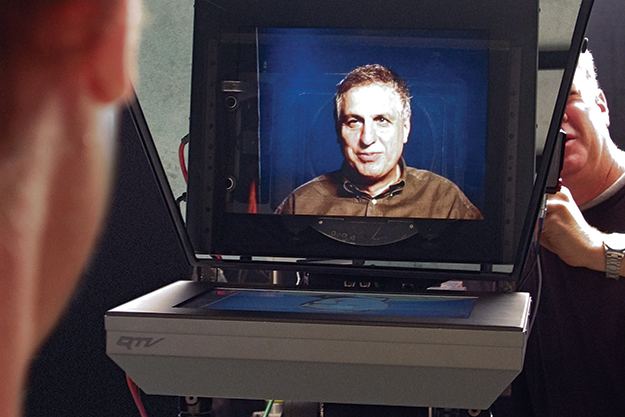
There’s a way in which Tabloid is inspirational.
I suppose I should ask, inspirational to what end? Or what kind of inspiration?
Isn’t part of the fascination with tabloid stories watching someone doing whatever the hell they want? Like a total fulfillment of their id.
Maybe. I’m not even sure, but it’s a really interesting remark because I’m not sure what constitutes a tabloid story, but that may be part of it. Somebody doing something that we can’t really quite imagine ourselves doing. Or at least it’s a stretch of the imagination. We all know that we are capable of stuff, in all likelihood, perhaps, thank God, we’re just not going to do.
Did Joyce McKinney’s story change your idea of what a tabloid story was?
No, I’ve loved tabloid stories forever. My wife pointed out that in my thirties I would submit proposal after proposal after proposal for films that no one was interested in making, and, as she says, now there are entire television channels devoted to the kinds of things that I was proposing. And they were tabloid stories. I have a whole pile of these tabloid stories that no one wanted to pay for.
Didn’t Gates of Heaven come out of a news clipping?
A tabloid story! Well, it comes from the San Francisco Chronicle, but for all intents and purposes, a tabloid story. Who would argue otherwise—500 dead pets go to Napa?
I had proposed, and you can stop me at any time if this is too much, I had proposed, at one time or another, a story called Car Baby, which was about a guy who had traded his infant child for a Corvette. I had proposed another story called Road, about a guy who was so frustrated in his attempts to get the federal government to build an interstate highway across northern Minnesota, he decided he would do it himself. And it led to disaster after he had built less than a mile of his interstate and then he was forced to put in a right-angle turn because he couldn’t buy the adjacent property. And so on and so forth. I have all of these stories.
One thing that I do feel strongly about is that we often think—and this is the essence of Tabloid for me—that the profound and the ridiculous are incompatible. That you can’t have both in one story. And I beg to differ.
They’re flip sides of the same coin. It reminds me of a movie like the Coen Brothers’ A Serious Man.
Their best movie.
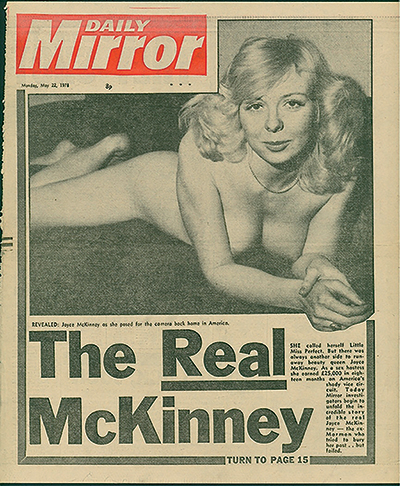 And the personal universes that you explore, which are often both profound and ridiculous, are sustained by the force of each person’s myth-making.
And the personal universes that you explore, which are often both profound and ridiculous, are sustained by the force of each person’s myth-making.
Well, it’s a tendency we all have. Joyce McKinney may have it in a stronger form than most people, but we all see ourselves as the protagonists in our autobiographies.
But the people in your movies are often in a state of denial. That seems to be something the people in your documentaries have in common, both historical players and more “ordinary” people.
Here’s what’s puzzling to me. I like to think that my films continue to puzzle me. Certainly the characters at the heart of what I do continue to puzzle me, long after I’ve actually made a film about them. And Joyce is really no exception. And one of the strangest things is, when the film was first shown—this is even pre-Toronto, this goes back to early screenings and when it was first shown at Telluride—people would see those clips at the beginning and at the end and some people assumed that I made it up. That I had somehow cast someone as the young Joyce McKinney and then shot it to make it look like something that was shot years and years and years ago. But of course that’s real footage. It was produced by an AFI student who had heard about the story and had decided that he was going to interview Joyce, and this is material from a film he never finished. And what’s so remarkable to me is she’s telling her life story at a time where her life story had not yet really played out. It was a self-fulfilling prophecy. How odd.
It’s a potent way to bookend it, the way Tabloid is framed by Joyce describing the tale of Narcissus, someone obsessed with himself.
It’s a love story, and I think this is also an essential part of Narcissus, it’s a love story that involves one person. But a person isolated, removed, cut off, from the rest of the world. I didn’t put it in the film—I went back and forth—but Joyce had briefly mentioned this Theodore Dreiser story called “The Second Choice.” And it’s an amazing story. It’s about this young woman, she’s writing letters to this man that she loves, who clearly has very little interest in her, and she is forced to settle, in the end, for a man she truly does not love. The unromantic figure. The pedestrian figure. She says she’s not going to end up like her mother, but then you have the feeling that it’s going to be even worse than anything that she imagined. In the Dreiser tradition, it’s a really despairing story. One of the bleakest. I often think about it as one of the bleakest short stories in American letters. And yet Joyce is enamored with it. Her takeaway from Dreiser is that she’s not going to let this happen to her. But the oddity is, by not settling for whatever the second choice might be, she condemns herself to something so sad, and so hopeless. Yet, on the other hand, something truly romantic. It’s just crazily romantic. This dream of eternal fealty. It seems divorced from the love object itself.
It’s something you can cultivate without even having the love object there. In fact, it almost makes it better if the object is not there.
Absolutely. Yeah. You wouldn’t want the love object itself to interfere with the fantasy.
That’s right.
So, what a story! It sounds of course like I’m hyping my film, and of course I am hyping my film, but I do think it’s one of my better efforts. I think it has a whole mixture of themes that are in many of my movies.
I also saw Tabloid as an encounter between two storytellers, you and Joyce McKinney, except that you also become one of the men in the story.
You betcha! After all, she collects men. That seems part of her genius All of these men who became obsessed with her, and stayed obsessed with her. After years and years and years and years. And I’m one of them!
What obsesses you about her?
The idea that somehow, each one of us is at war with reality. And most of us give in in some way. Reality just rolls over us. There’s a character that I just loved in Vernon, Florida, called Albert Bitterling, he’s the man with the jewel. I didn’t put this line in the movie, I think the line was badly recorded and I couldn’t use it, but he said to me, “You know, Errol, you don’t break the rules, the rules break you.” And Joyce really has in some sense destroyed her life with this obsession, and yet somehow the obsession remains intact.
And she seems to object to the word “obsession.”
Yeah. There’s a scene I really love in Exorcist II: The Heretic, the John Boorman failure. Which I certainly prefer to part one, because it’s, you know, whatever it is, a $14 million independent film? Someone says to Richard Burton, who’s a priest, “You’re obsessed.” And Burton seems outraged. He says, “I‘m not obsessed! I’m not obsessed! I’m not obsessed!” His eyes are bulging a little bit, and then he pauses and says, “Well, maybe a little bit fascinated.”
Right.
Let’s put it this way, I don’t believe the choice of the O-word is inappropriate. If that’s not obsession, what is it?
That’s another side to the Narcissus tale: that obsession is self-consuming, you disappear into it. Which reminds me of a criticism of your recent work: that we’re looking at people and getting deep into their personal stories, their reflections, but without a context.
Yeah, I, uh, I don’t know what to say. You could say that there’s not enough context for The Fog of War or Standard Operating Procedure. To me it’s not an issue of context. You’re telling a certain kind of story. If the argument is that all stories should be of a certain form, I respectfully disagree.
In Fog of War, I’m trying to tell a story of really two characters. You could even think of them as doppelgängers. The forty-something Robert McNamara versus the eighty-something Robert McNamara, almost in conversation with each other. Standard Operating Procedure attempts to tell a story about a set of photographs that everybody thinks they know but really they do not know.
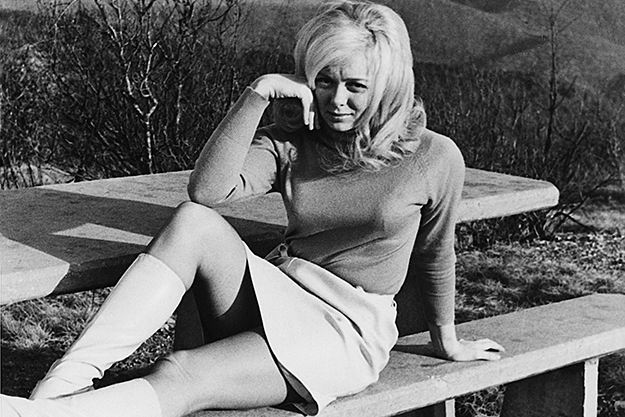
People seem to want some sort of reassuring judgment that lets us know, it’s okay, we know what side we’re on.
Maybe it’s because I don’t know what side I’m on. On one hand, in the context of these two films that have a strong political element, I certainly have strong political feelings of my own. I wanted to investigate something. I wanted to find out something that I did not know. I mean, don’t get me wrong. There are lots of political films where people go into them with an agenda, and rightfully so. They know what they want to say, they know what their position is, and they proceed to say it. I like to think of my films as investigative. I don’t know what I’m going to hear. I don’t know what people are going to say.
And I often think that, if I’ve done my job correctly, that the story that emerges on the screen captures something of the complexity of reality, something of the complexity of the character that I am portraying. Because I think the world is complex. I think Joyce—I know Joyce is complex. And do I really understand her? I do not. Why she did this. And there’s certain things that I can’t really even clear up.
People forget the perishability of history, and this is another theme that really interests me. If you lose documents or people die, relating to an event in the past, you may never know. It’s not saying that truth is subjective, it’s just simply saying that we may never have all the cards in the deck that allow us to say that this hand was three of a kind versus a full house or a flush. We may never know what happened, for example, inside that love cottage in Devon. KJ is dead. Kirk is not talking to me. There’s just Joyce.
Did you ever find out why Joyce goes to Los Angeles in the first place?
We tried to find all these people from L.A. We couldn’t. I mean, the only one we were able to find was the airline pilot. If I could have come up with more people I would have been delighted but I just couldn’t. I think I’ve been criticized for this too but I’m willing to defend myself: I don’t like the idea of adversarial interviews. I just don’t. Say I asked Joyce, “Were you a hooker in L.A.?” What am I learning exactly? I could get her to deny it… And I suppose it is a whole kind of movie where that becomes an essential move that you make. You ask the difficult question, you ask the embarrassing question, you ask the damaging question, whatever. And you look at the person’s reaction to that question. I don’t think that’s part of this kind of story. Maybe that’s not entirely satisfying for an audience, but I like the fact that there are these separate, almost island universes, people telling stories, that intersect. Also, I doubt my asking that question would bring us closer to any truth about Joyce McKinney.
I like all the different approaches—Marcel Ophüls’s documentaries, where he’s really doing bulldog questioning, or Frederick Wiseman. And what’s interesting, too, is I know you’re a fan of Wiseman’s films, and he’s a huge fan of Ophüls! They’re just different approaches.
Yeah. Well, one of the interesting things about documentary is that it really represents such a wide variety of styles. To think that there’s one kind of thing that you call “nonfiction” is really untrue. Just look at this cornucopia of possibilities. It’s one of the things I like about the genre: you’re really creating your own form of filmmaking. You have the opportunity to do that. Rather than create cookie-cutter films that really resemble everything else, you can do something that is idiosyncratic and unique.
I wanted to ask also about Tabloid’s visual scheme. Joyce and the interviewees are often left, right, center, in the frame, jumping around. What are you aiming at with that?
The absence of jump cuts. It’s a well-known phenomenon in interviews that you frame the person in, say, the middle of the frame, and when you have to edit out a segment in the interview, it’s a jump cut. They’re not exactly in the same place. And people deal with jump cuts in different ways. It’s a montage question, if you like. I’ll cut away to something so you don’t see the fact that they’ve jumped. Or you’ll operate the camera in such a way that the camera is constantly in motion, but there still may be jump cuts, which is what I did in The Fog of War. Or I became fond of this idea that I could actually digitally reposition people in the frame and avoid jump cuts. I used that in Standard Operating Procedure and Tabloid. It’s just a different idea of montage.
How does that work exactly?
How it works is that, say the person is on the left side of the frame, and I’ve shot them on a seamless background, on a painted canvas background, what you would find in a photographer’s studio. Also when I’ve shot the interviews, I pan the camera to the left, and I pan the camera to the right, so I have additional material. And, say I want to shift the person to the right in the frame, I shift them to the right digitally. I just move that whole section, and then paste in that same background on the left. So, if you like, it’s cutting and pasting.
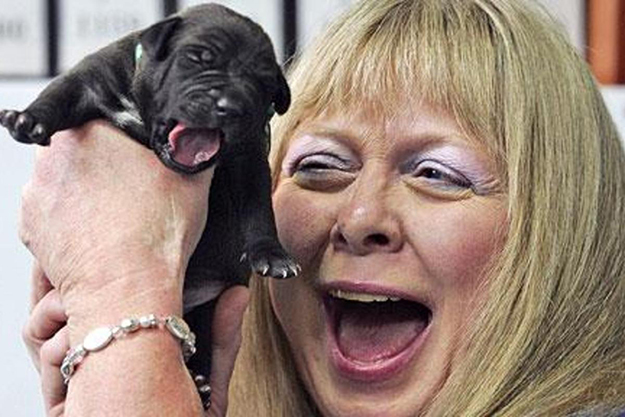
That almost makes it a kind of photographic animation.
But it is an effective way of avoiding jump cuts. Years and years ago I remember seeing Reds, and I believe that the interviews in Reds were inspired by Diane Keaton, she had suggested it because of her love of Gates of Heaven. The extraordinary thing about the interviews in Reds, aside from the fact that they were so beautifully lit by Storaro, is that they were in ’scope. And I think it’s an amazingly beautiful format for interviews. And they are ideal for shifting! And so I used the ’scope format for SOP and for Tabloid. I like the way it looks. I’m going to continue to use it.
It’s interesting because it goes with the twists and turns of their telling of the story, too. You get a new angle on things, so to speak.
Yeah. I even digitally—you know, there’s about three, maybe even four sections in the movie where it actually does a kind of pan from one character to another?
The whip pans.
That’s done digitally.
Right, right.
I like to think of myself as being on the forefront of interview technology.
On the cutting edge!
Trying to figure out ways to film people. And part of it is how to edit people. How to edit and film interviews. It gives the film a formal look, a kind of formal precision, which I also like.
Speaking of interviews, you use them in almost a collage fashion in your upcoming book Believing Is Seeing.
Ah! Yeah, I think there’s a lot of me in that book as well as in the movies, on the nature of the images. But it would be fun, at some point, to do something about interviews as well, because they fascinate me. Probably a book. For years I couldn’t write, so now I’m writing. I have three books coming out. Really, by and large finished. A book on photography, and essays on photography, rewritten from essays that originally appeared in The New York Times. And then I have a second book, which is an essay that I wrote recently for the Times, which is coming out from U of Chicago Press called The Ashtray. And that is being published as a book. And then I have another book coming out—it’s very odd, I can’t explain why all of this is happening but it is—on the Jeffrey MacDonald murder case. A case that I had wanted to make a movie about for years, but it became clear that no one was giving me the money to make the movie and I should write about it. I had ideas about it that I wanted to express, and I wanted to investigate it in a kind of way through interviews, so I did it.
Why couldn’t you write before?
I don’t know. I’ve often thought I became a documentary filmmaker because of my trouble writing. So I’d have people write these scripts for me in the forms of interviews, and then I would create a movie out of the material. Which is really the hardest way to do it. The impossible way to do it. Because I was never observing the conventions of documentary filmmaking. I never had any of those things that made it quote unquote easier. I didn’t have narration to connect everything up. I just had these scripts that were essentially created out of interview material.
So now I feel like I’m starting for the first time. I feel like now I can write—we’ll see how long that lasts. I keep thinking that it’s going to be like, you know, “The Monkey’s Paw,” or some kind of Faustian pact. It’s all going to come to naught, but so far so good. And then I intend to start writing scripts, because I’ve had all these movie projects that have never been realized, in part because of my difficulty in writing. So I’m hoping to finally have a career as a filmmaker and writer.
Are they dramas, comedies?
I’ve had all these dramas over the years, and it’s hard to describe because I think it’s equally hard to describe my documentaries, what it is I do. I think that, you know, I am a funny guy. I mean, if you ask people if they think Fog of War or Standard Operating Procedure shows my gift as a funny person, I think the answer was, “Not so much, Errol.” And I think that Tabloid does. I think the movie answers to this dream. I’ve always said, to me, the perfect work of art has three elements. Like if you were to do the pie graph, it’s three segments of the pie equally divided: sick, sad, and funny. Sick, sad, and funny. And I believe that Tabloid is sick, sad, and very funny.
I can agree with that.
And, you know, there’s a lot of things that I like, but I just love that found footage with Joyce where she’s panning the backyard over and over again with her voiceover, and nothing is happening. Nothing is happening, it’s just the barking. And when she finally cuts to the close-up—I cut to the close-up, she shoots the close-up—the dog isn’t barking. To me, that’s tragedy.
It’s like a surveillance video of nothing going on.
It’s a surveillance video of nothing. Thank you so much, sir. I agree.
By the way, I just wanted to mention something else, I looked up the word “tabloid”—I’m sure you must have done this already—and I didn’t know it was actually originally the trademark from a drug company that made tablets!
Is this true?!
Yeah!
Geez! Well, I always thought, and I must have looked it up several times, there’s alternative meanings, but I thought that it referred to a certain size of newspaper, like The New York Post today, for example, or the National Enquirer, or the Weekly World News. But then of course it morphed into a kind of story. And I liked your comment at the beginning, by the way, that it represents a certain kind of human excess. Something that I might have done, but thank God I didn’t.



